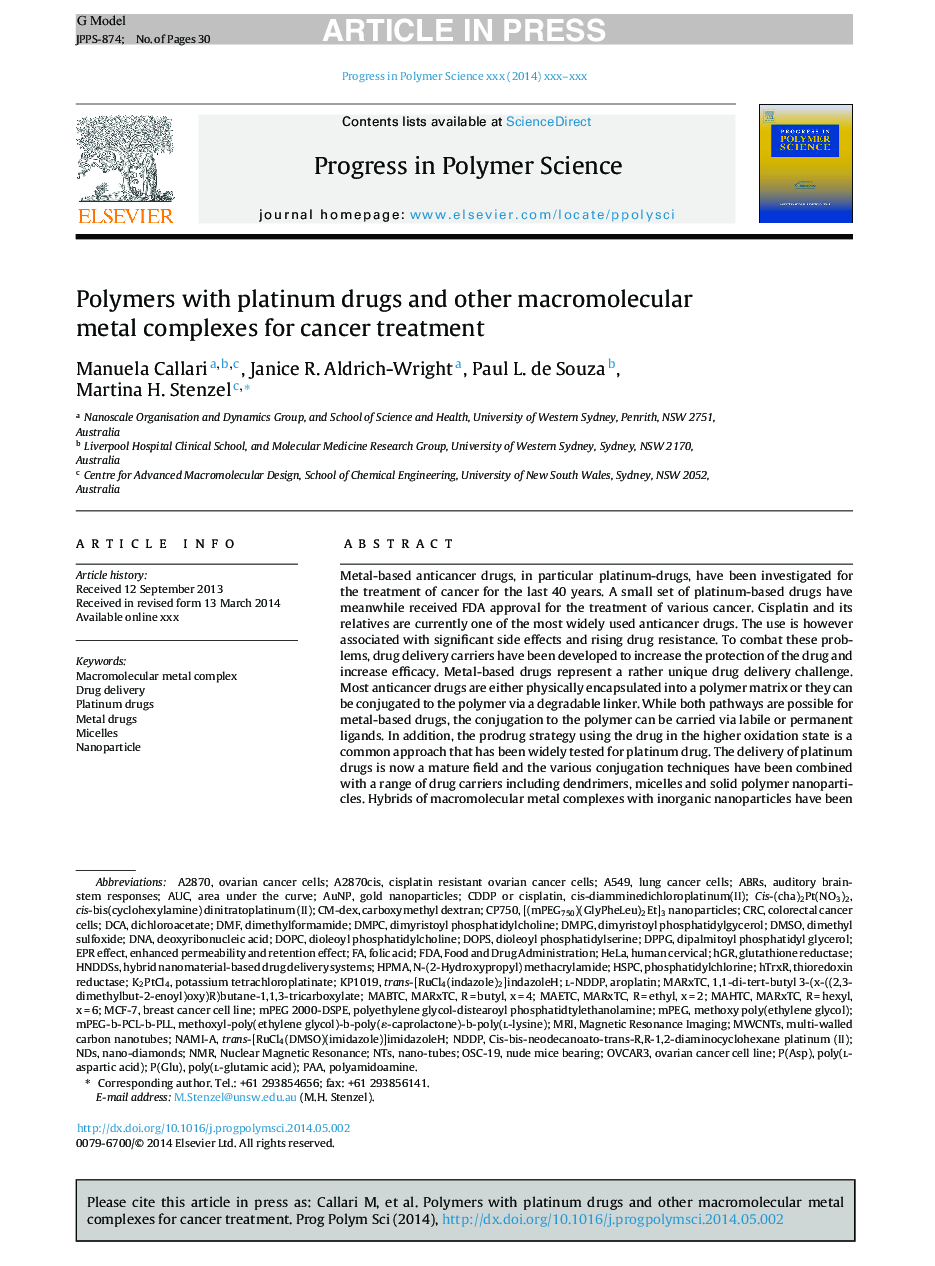| Article ID | Journal | Published Year | Pages | File Type |
|---|---|---|---|---|
| 5208120 | Progress in Polymer Science | 2014 | 30 Pages |
Abstract
Metal-based anticancer drugs, in particular platinum-drugs, have been investigated for the treatment of cancer for the last 40 years. A small set of platinum-based drugs have meanwhile received FDA approval for the treatment of various cancer. Cisplatin and its relatives are currently one of the most widely used anticancer drugs. The use is however associated with significant side effects and rising drug resistance. To combat these problems, drug delivery carriers have been developed to increase the protection of the drug and increase efficacy. Metal-based drugs represent a rather unique drug delivery challenge. Most anticancer drugs are either physically encapsulated into a polymer matrix or they can be conjugated to the polymer via a degradable linker. While both pathways are possible for metal-based drugs, the conjugation to the polymer can be carried via labile or permanent ligands. In addition, the prodrug strategy using the drug in the higher oxidation state is a common approach that has been widely tested for platinum drug. The delivery of platinum drugs is now a mature field and the various conjugation techniques have been combined with a range of drug carriers including dendrimers, micelles and solid polymer nanoparticles. Hybrids of macromolecular metal complexes with inorganic nanoparticles have been tested in recent years to combine the ability to deliver the drug with imaging properties. An emerging trend is the surface decoration of the polymeric nanoparticles with targeting ligands such as folates. The advanced state of this field is evident by the fact that some macromolecular platinum drugs even advanced to the clinic. While the delivery of platinum drugs has been well explored, the delivery of other metal-based drugs based on gold, ruthenium or cobalt is still in their infancy.
Keywords
DMPGmPEGdMPCNDSMCF-7AuNPPAANTSABRsHSPCDOPSDOPCA549MWCNTsHPMADPPGhGRKP1019FDANAMI-ADMFNano-tubesdimyristoyl phosphatidylcholineDCAN-(2-Hydroxypropyl) methacrylamidenuclear magnetic resonanceAUCcis-diamminedichloroplatinum(II)DMSODNAEPR effectdeoxyribonucleic acidFolic acidMRIDrug deliverythioredoxin reductaseNMRMagnetic resonance imagingPlatinum drugsdimethylformamideDichloroacetatedioleoyl phosphatidylserineDioleoyl phosphatidylcholineDimethyl sulfoxideFood and Drug AdministrationBreast cancer cell lineOvarian cancer cellsovarian cancer cell lineLung cancer cellsColorectal cancer cellsMicellesMethoxy poly(ethylene glycol)area under the curveNanoparticleGold nanoparticlesMulti-walled carbon nanotubesEnhanced permeability and retention effectauditory brainstem responsesPoly(l-glutamic acid)PolyamidoaminePoly(l-aspartic acid)HelaCRCcarboxymethyl dextranglutathione reductase
Related Topics
Physical Sciences and Engineering
Chemistry
Organic Chemistry
Authors
Manuela Callari, Janice R. Aldrich-Wright, Paul L. de Souza, Martina H. Stenzel,
